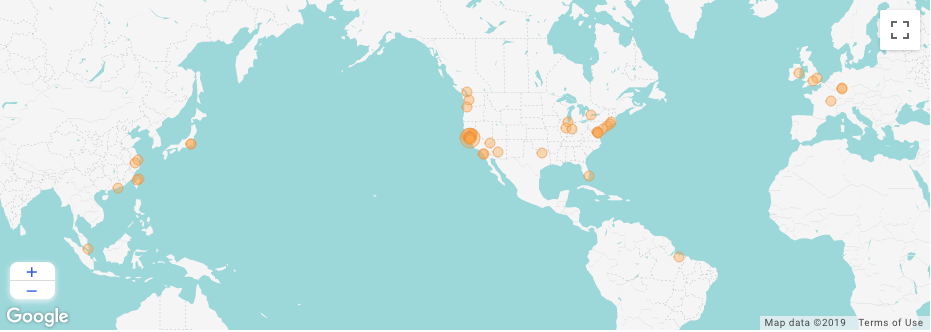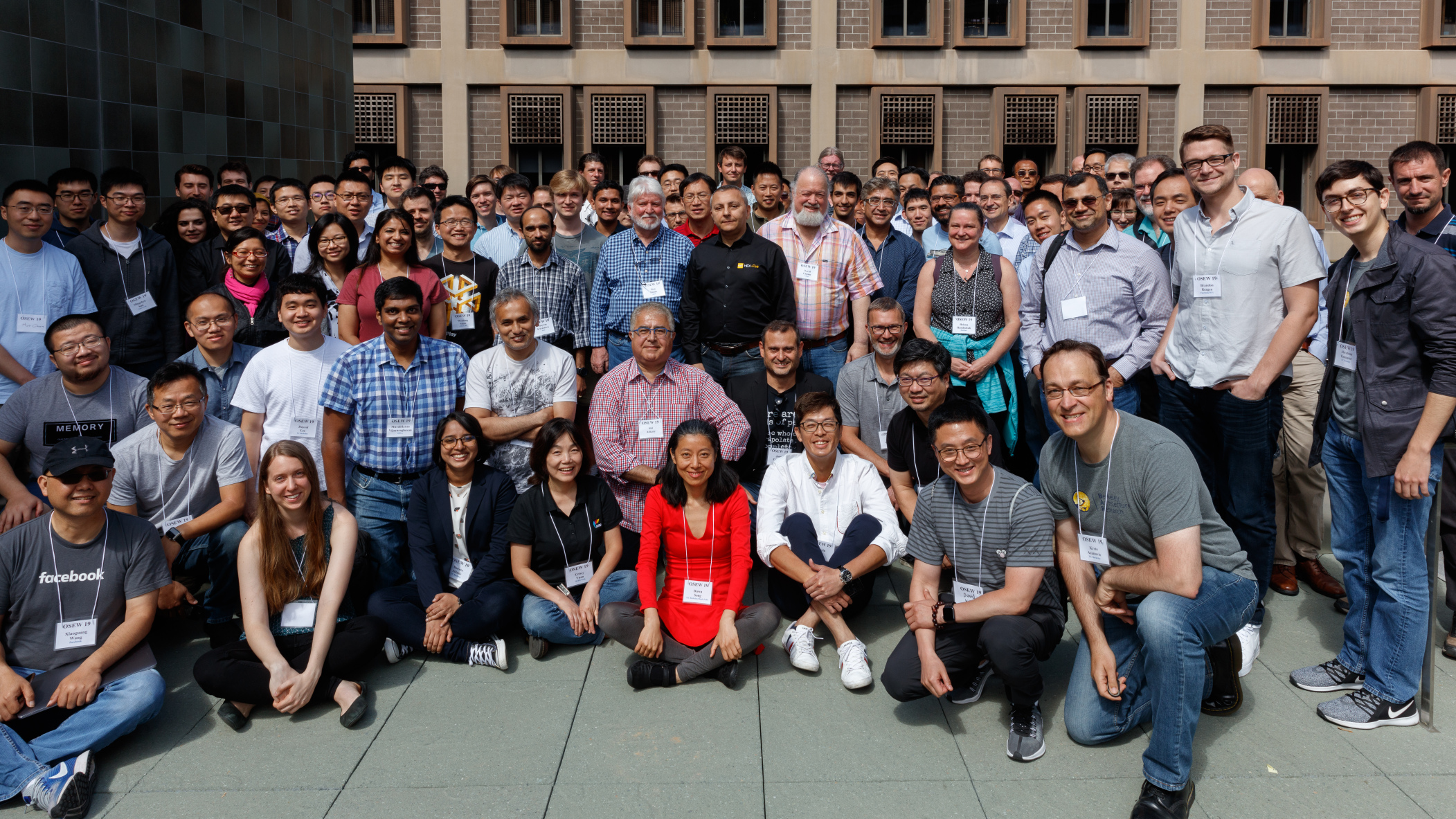We had a fantastic Open-Source Enclaves Workshop (OSEW 2019) last week (July 25th) at UC Berkeley hosted by the Keystone team. OSEW aims to bring the architecture and systems-security community together to make progress towards building open-source, secure, performant enclaves. This year, we discussed the different threat models, the components for secure enclaves, best practices and state-of-the-art techniques for each component, and open problems in this space.
OSEW 2019 featured 25 talks from 23 organizations across academia and industry as well as an in-depth industry discussion panel. After more than 150+ registrations from 14 countries from all over the world, over 120 attendees participated in the workshop.
Our predictiction is that “In the next 10 years, most chips will have secure enclave capability”. As one of the first key steps towards safer and open enclaves, we announced the start of the Trustworthy Secure Enclaves Alliance; a partnership of different entities in the secure hardware and software space to help distribute trust in future platforms. Our aim with this effort is to be better prepared for the surge of secure enclave capabilities and to gracefully embrace the future TEEs, while doing all of it as a community. More details will be coming soon.
Talk Highlights
Keystone
Dayeol’s update talk on the Keystone project, an effort towards building a fully open-source framework for trusted execution environments (TEEs) based on hardware enclaves. The talk introduced “customizable TEEs”, a new model for building TEEs, where one can compose various building blocks of TEEs depending on the threat models or the use cases. It also explained how Keystone is designed with RISC-V to implement minimal hardware-enforced isolation and showcased modular plugins built on top of it. Checkout the full Keystone paper and our open source code.
RISC-V, TEEs, and Rust
Ahmad-Reza Sadeghi from TU Darmstadt gave an excellent witty talk on hardware bugs, finding bugs with competitions, and a very useful categorization of various TEE solutions. Cesare Garlati from Hex-Five Security gave an engaging talk on multi zone enclave using RISC-V.
A recurring theme of the workshop was how to make the code run in enclaves safer regardless of the specific TEE. Mingshen Sun from Baidu X-Lab discussed their efforts on bringing Rust support to Keystone, as well as their general Mesa TEE platform. Similarly, we heard from Jethro Beekman of Fortanix about their approach to Rust SDKs for enclaves on SGX.
Verification
Verification was another recurring topic which came up in various presentations and Q&A sessions. A couple of talks from UC Berkeley and one from UW show-cased new verification tools and techniques for TEEs in general and covered targeted efforts tailored for RISC-V platforms. Given the importance of verification and amazing on-going work, this area of research is emerging as an exciting space to watch out for.
Side-channels and Speculation
Another contemporary and timely topic was on side-channel attacks and defenses, with a pair of talks Chris Fletcher and Josep Torrellas of UIUC on defenses for speculative attacks like Spectre. General compiler-assisted tooling for these defenses are a welcome addition to any sensitive program, especially since enclaves operate with an attacker controlling everything needed for Spectre-family attacks. As a wrap-up to the topic, Yinqian Zhang from The Ohio State University gave an excellent overview of the variety of side-channel threats known to Intel’s SGX and AMD’s SEV.
There were many other interesting talks from industry speakers including HTC, Google, Google, ARM, Oasis Labs, Anjuna, Fortanix, Visa Research, and PlatON.
Panel Discussion
Finally, we had a panel discussion where panel members engaged in an open discussion on various pressing questions of security of emerging TEEs. We were fortunate to have Paul Chou (Senior Director of Platform Security at Nvidia), Paul Kocher (Independent Security Researcher and Entrepreneur), Justin Lin (Security Architect at HTC), Frank McKeen (Sr. Principal Engineer at Intel Labs), and Satyam Srivastava (Senior Deep Learning Engineer at Intel) as our panel members. Thanks to Krste Asanović for moderating the discussion.
To kick start the discussion, each panel member spoke briefly about what worries them the most right now. Side-channel vulnerabilities, taking the TEE conversation beyond CPUs, and things being binary in our minds when security is a probabilistic thing were the highlights of everyone’s concerns. Then they discussed why a lot of known best practices aren’t being implemented and how we can solve known problems before we solve new issues. The discussion circled around this being mostly an economic problem governed by incentive. Prompted by a question from the audience, panel members discussed the possibility of introducing security levels for software as is being done for self-driving cars. They noted that compliance to regulation is more of a passing criterion than a differentiator when it comes to security. Next, the members expressed their vision for the right model for enclave-capable accelerators and how to extend CPU TEE to these emerging class of devices. The unanimous response was that it will be highly dictated by the use-case. Lastly, panel members discussed corner-case scenarios such as the response to a secure boot failure, where real-world decisions post-failure are unclear. The discussion ended on a positive note that security failures are inevitable and we’re not going to get things right the first time. The only recourse is to embrace this fact, have mitigations in place to handle and patch failures gracefully, learn from the failures, and address them in the best way possible.
Thanks to everyone who made this possible
A big thank you to our sponsors Western Digital and Seagate for their support, a shout-out to our admins Tami and Ria from the ADEPT lab for all the hard work and help in organizing the workshop, and cheers to all our attendees and speakers who made OSEW’19 a successful event with their active participation.

